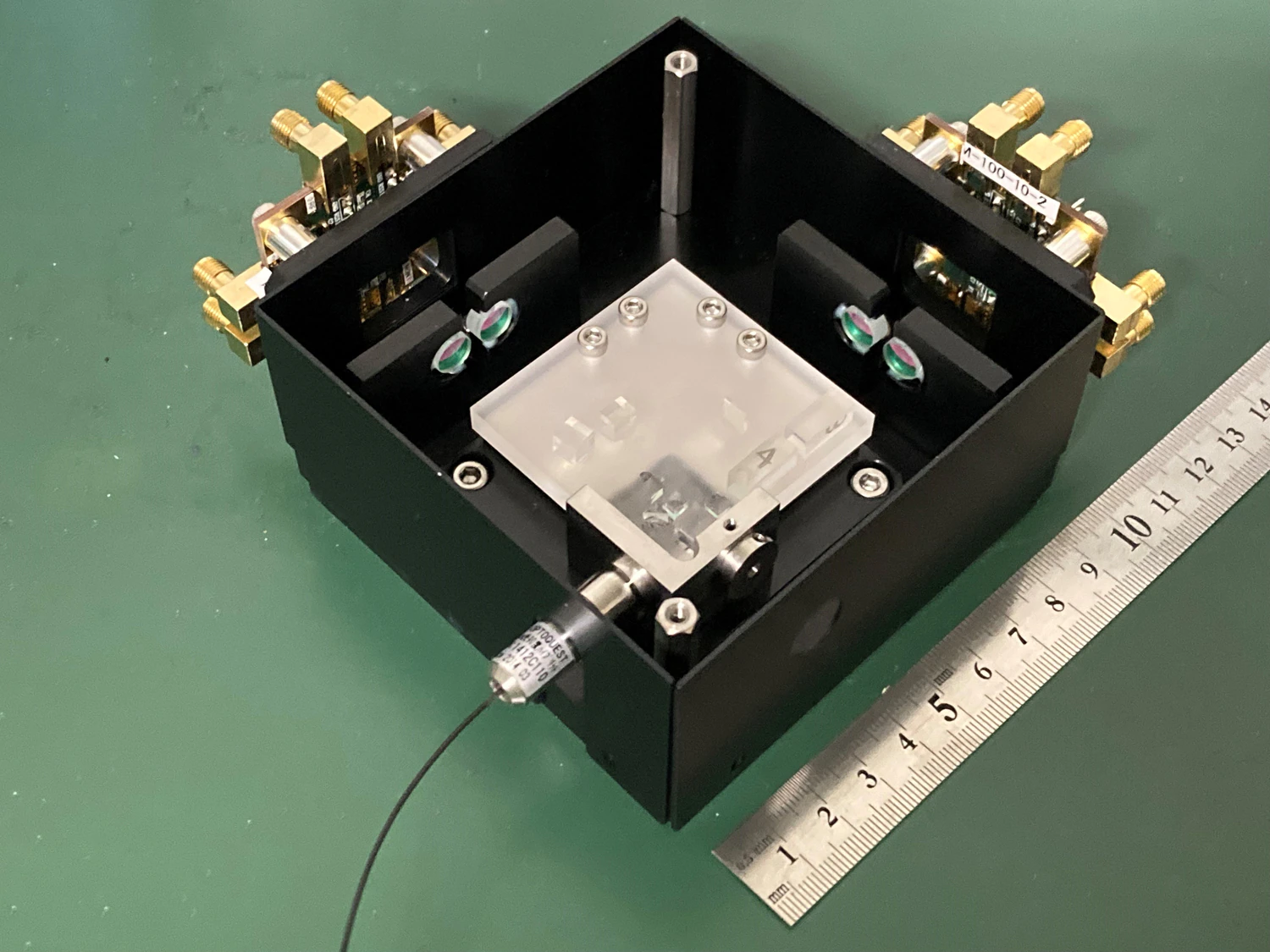Reviewed by Alex SmithMay 31 2022
Mitsubishi Electric Corporation has announced the development of a prototype of the world’s first optical receiver for use in laser communication terminals (LCTs). It integrates space optical communication utilizing laser beams and a function to detect the direction of received beams in the 1.5-μm band, a general-purpose band used for terrestrial optical fiber communications and other applications.
 Optical receiver prototype for laser communication terminal (LCT). Image Credit: Mitsubishi Electric Corporation
Optical receiver prototype for laser communication terminal (LCT). Image Credit: Mitsubishi Electric Corporation
High-resolution satellite imaging is used to assess catastrophe damage, however, as each of these images are communicated over radio waves, it has proven challenging to transmit high-resolution photos in real-time due to data capacity and satellite antenna size limits. To assist in quick and accurate damage assessments following disasters, large-capacity, high-speed space optical communications that do not require optical fiber are required.
However, because space optical communications use very small laser beams, about 1/1000th the width of radio waves, the issue has been aligning laser beams with satellites traveling at high speeds.
Mitsubishi Electric has created an optical receiver that tackles this difficulty by integrating functionality to detect both the four-phase shifts of laser light and the direction of the beam. The result is a miniaturized optical receiver that allows for 10 times the speed, capacity, and range of radio-wave communication in space.
Smaller antennas can be used in tiny communication devices that can be deployed in situations where optical fiber is difficult to install, such as between buildings, since the wavelength is significantly shorter. Installations are also possible in regions where standard infrastructure is not accessible, like disaster zones, developing countries, or isolated areas, allowing wireless communications to be used in a wider range of conditions.
Features
World’s First Optical Receiver That Integrates Spatial Laser Acquisition in the Photodetector
- The photoelectric converter, which accepts laser light and converts it to electrical signals, is separated into four segments, and the direction of incoming laser beams is accurately determined by analyzing the output signal intensity of every segmented element. In traditional systems, a specialized sensor for sensing beam directions is no longer required.
- The world’s first photodetector combines features for space optical communication and laser angle-of-arrival detection into a compact optical receiver.
Optical Circuit Detects Four-Phase Changes for High-Speed, Large-Capacity Communications
- In comparison to typical two-phase (0 and 180 degrees) identification, a newly constructed optical circuit for coherent space optical communication senses four-phase changes (0, 90, 180, and 270 degrees). As a result, communication capacity and speed in the same bandwidth are double that of two-phase optical communication methods, while radio-wave communication systems are 10 times faster.
- When compared to the traditional way of recognizing intensity changes owing to beams turning on and off, the coherence detection method allows communication over larger distances with the same laser-beam intensity. Furthermore, for more reliable communications, the coherent technique is less affected by sunshine and other background light.
Optical Receiver Integrates Photodetectors and Optical Circuit in One Small (10 cm3), Lightweight Module
- The beam-direction sensing function of the photodetectors eliminates the requirement for a separate sensor. The optical circuit is also included on a compact 5 cm by 5 cm glass substrate, allowing two photodetectors to be mounted on a single printed circuit board. The single-module design results in a compact optical receiver that is less than one-fourth the size of Mitsubishi Electric’s previous generation, covering just 10 cm3.